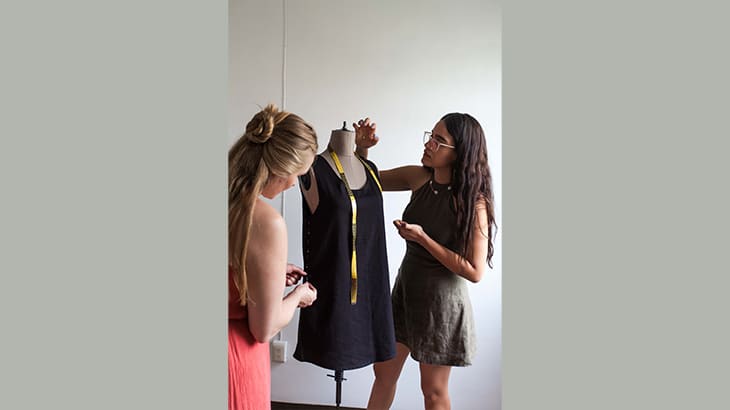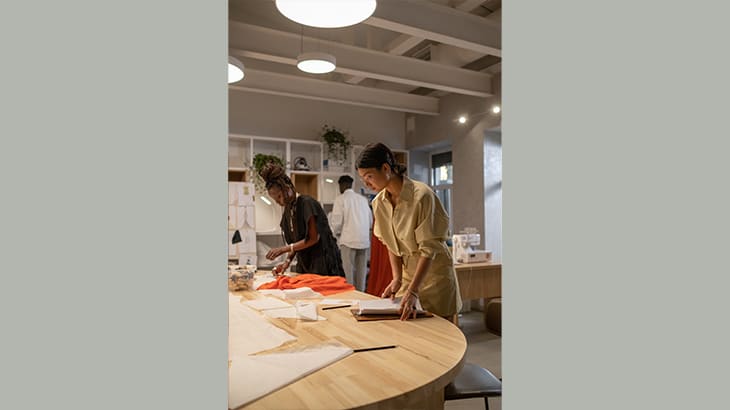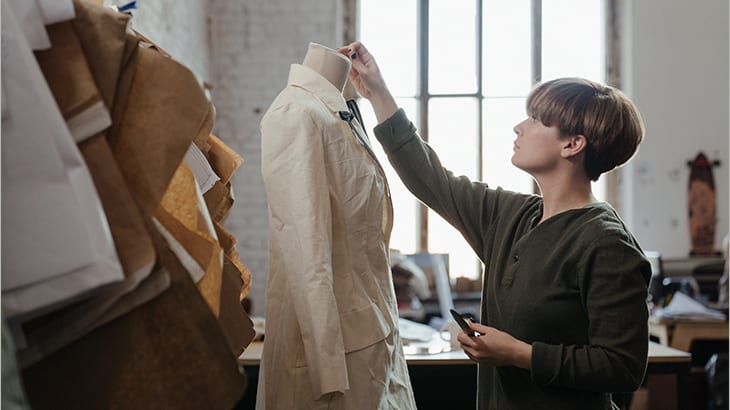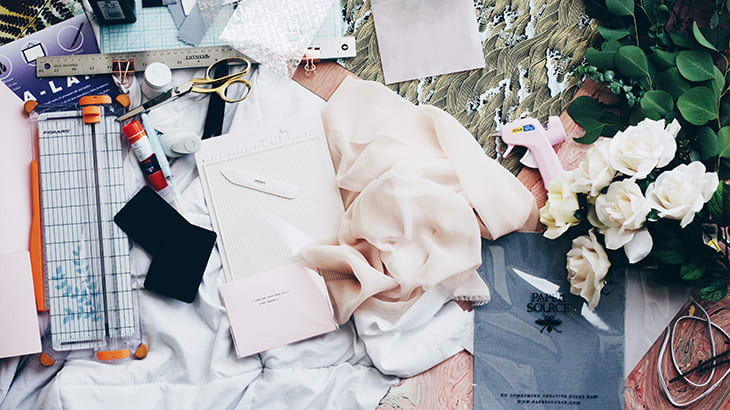History of Fashion! Who doesn’t know the term fashion, these days? To say it straightforwardly, everything is revolving around it. Agree? And when it comes to fashion design, the craze for it doesn’t need any introduction!
As fashion is everywhere, it is promising to make a career in it. To mark your name as professional, it is necessary to pursue a career in it. Hamstech offers different fashion design courses for individuals to learn design. Enrol now to learn from industry expert – Neeta Lulla!
Fashion Design
Fashion design is the art of applying design and natural beauty to clothing and its accessories. It has varied over time and place due to the influence of culture and trends. And a fashion designer is responsible for it.
Fashion designers produce clothing, including – dresses, suits, pants, skirts and accessories like shoes and handbags. They can specialise in clothing, accessory or jewellery design or may work in multiple among them.

History
Fashion design is generally considered as it was started by Charles Frederick Worth in the 19th century. He was the first fashion designer to have his own label sewn into the garments that he created. Before establishing his Maison Couturier, which is a fashion house in Paris, clothing design was managed by mostly anonymous dressmakers and high fashion settled from that worn at royal courts.
Worth’s success was that – he dictates to his clients what they should wear instead of blindly following their lead as earlier dressmakers. The term couturier is meant to be the first created. However, clothing created after 1858 is considered fashion design and till then was described as a costume design.
And coming to the present, are the days that many design houses began to employ artists to sketch, paint or illustrate designs for garments. These images were for clients’ reference, which was much cheaper than producing an actual sample garment. If the client is interested in their design, they produce the garment and made money for the house.

Types of Fashion
Garments produced by manufacturers fall into three main categories:
Haute Couture
Until the 1950s, they designed fashion clothing on a made-to-measure basis, with each garment being created for a specific client. A couture garment is made for an individual customer and is usually made from high-quality, expensive fabric, sewn with extreme attention to detail and finish, often using hand-executed techniques. Look and fit take priority over the cost of materials due to the high cost of each garment, haute couture makes little direct profit for the fashion houses.
Mass Market
Currently, the fashion industry believes more in mass-market sales that provide for a wide range of customers, which is all about producing ready-to-wear garments with trends set by famous designers in fashion. They often wait to ensure that a style is going to catch on the next season before producing the original look. To save money and time, they use cheaper fabrics and simpler production techniques, therefore, they can be sold much more cheaply.

Ready-to-Wear
Ready-to-wear is a go among high fashion and the mass market. These aren’t for individual customers, however excessive care is taken withinside the desire and cut of fabric. These are made in small amounts to assure exclusivity, so they are expensive. Ready-to-wear collections are normally supplied via way of means of fashion houses every season in Fashion Week, which takes vicinity on a citywide basis that takes place two times a year.
Half-way clothes are an opportunity to ready-to-put on and are deliberately unfinished collections that in addition co-design among the number one fashion dressmaker of the garment and the passive purchaser. This differs from ready-to-wear fashion because the purchaser is in a position to take part withinside the method of creating and co-designing their clothing.
Fashion Design Terms
- A style fashion designer conceives garment combos of line, proportion, colour and texture while stitching and pattern-making competencies are beneficial and they’re now no longer a pre-needful of a successful fashion design. Most fashion designers are officially educated or apprenticed.

- A pattern maker – additionally referred to as a sample cutter drafts the styles and sizes of a garment’s portions that can be completed manually with paper and measuring equipment or through the usage of a CAD software program. Another method is to drape material without delay onto a get-dressed form.
- A textile designer creates fabric weaves and prints for garments and furnishings. Most of these designers are officially skilled as apprentices and in school.
- A stylist coordinates the garments, jewellery and accessories utilized in fashion photography and catwalk displays. A stylist may also work with individual clients to lay out a coordinated cabinet of garments. Many stylists are skilled in fashion design, the history of fashion, and historical costume and feature an excessive stage of know-how withinside the modern-day style marketplace and destiny marketplace trends.
- A model wears and shows garments at fashion shows and in photographs.
- A fashion journalist writes fashion articles describing the clothes supplied or style traits for magazines or newspapers.
- A fashion photographer produces photographs of clothes and different fashion items and stylists for magazines or marketing agencies.

Also Read: SCOPE OF FASHION DESIGNING IN INDIA- CAREERS & OPPORTUNITIES!
Hamstech Courses
Hamstech is a well-renowned fashion designing college in Hyderabad that offers 5 various courses in the field of fashion. These 5 fashion design courses range at different levels but each course aims to insight students with the correct concepts and tunes with the fashion concepts for successful careers. And the industry expert – Neeta Lulla will guide the aspirants with some webinars and interactive sessions. By the end, you can get placed with top brands as a fashion designer, fashion stylist, fashion coordinator and more.
Without any delay get the Hamstech app downloaded, know more about fashion design courses and enrol for one!

